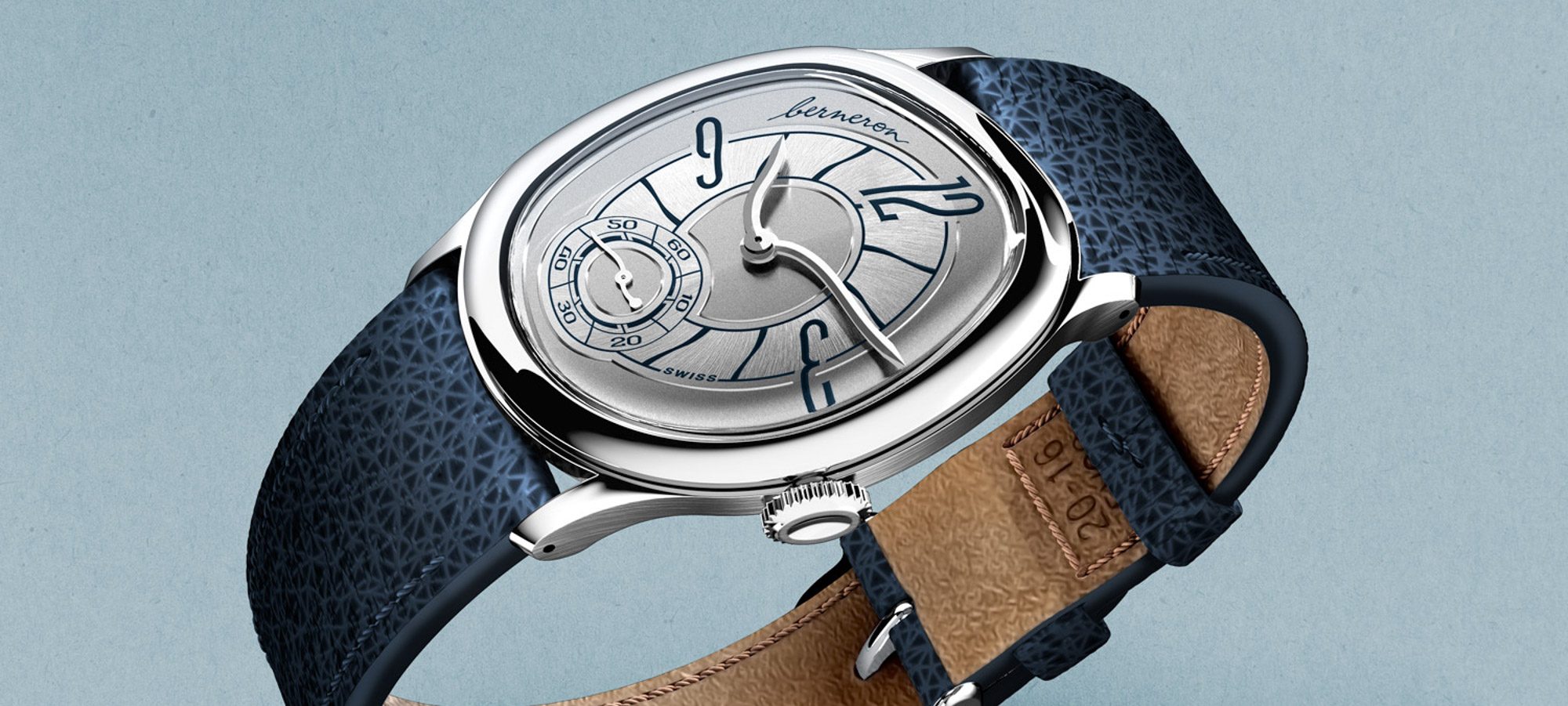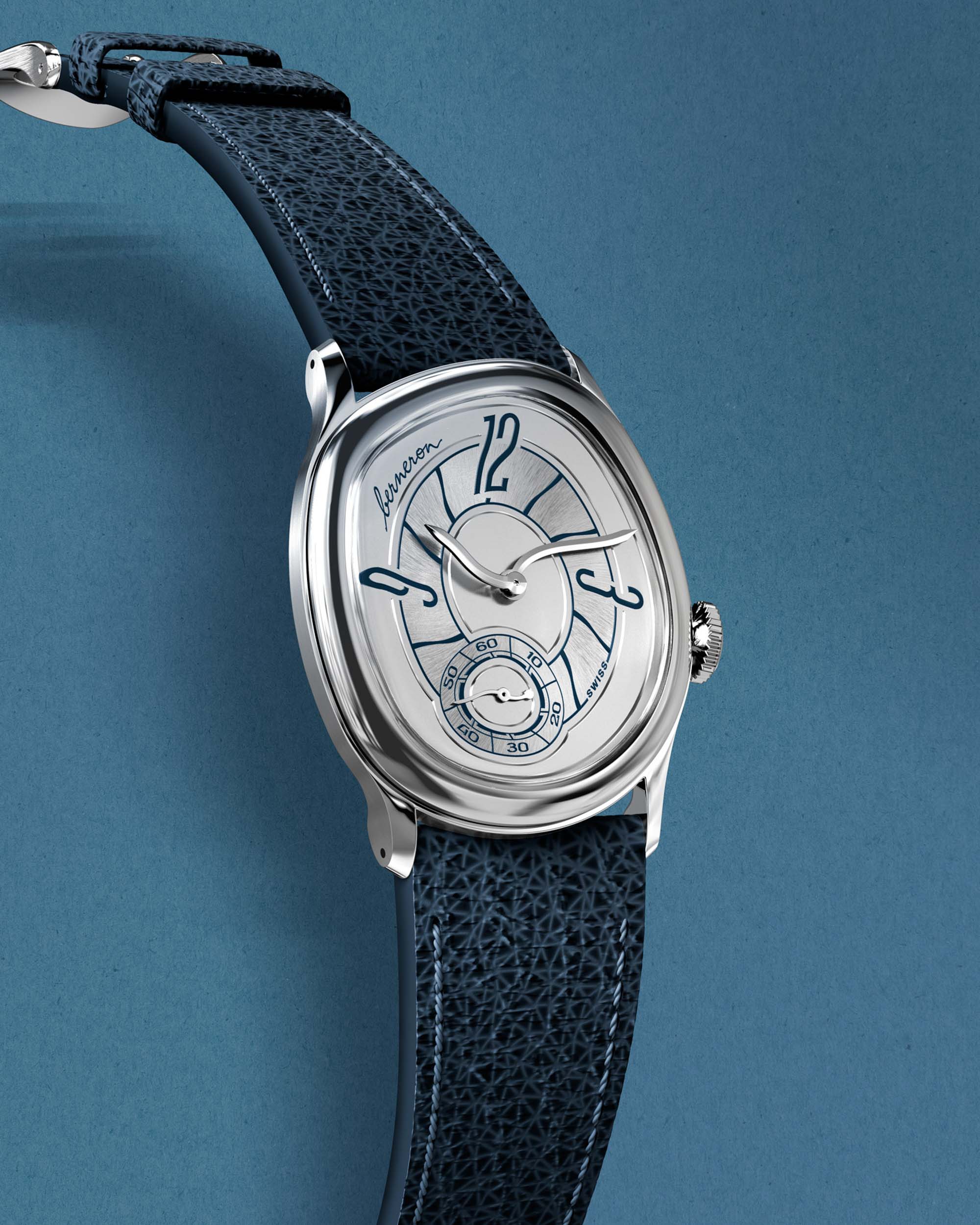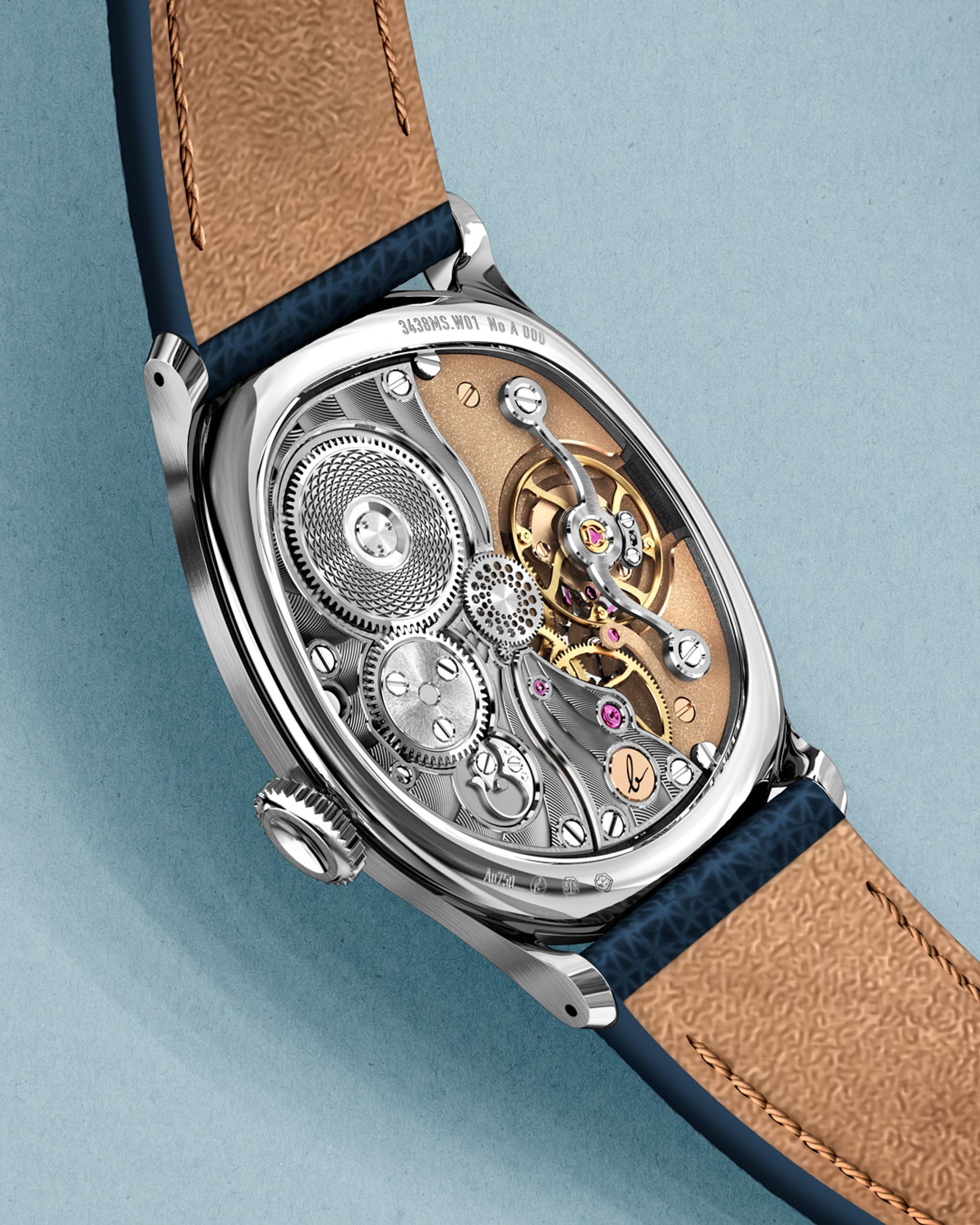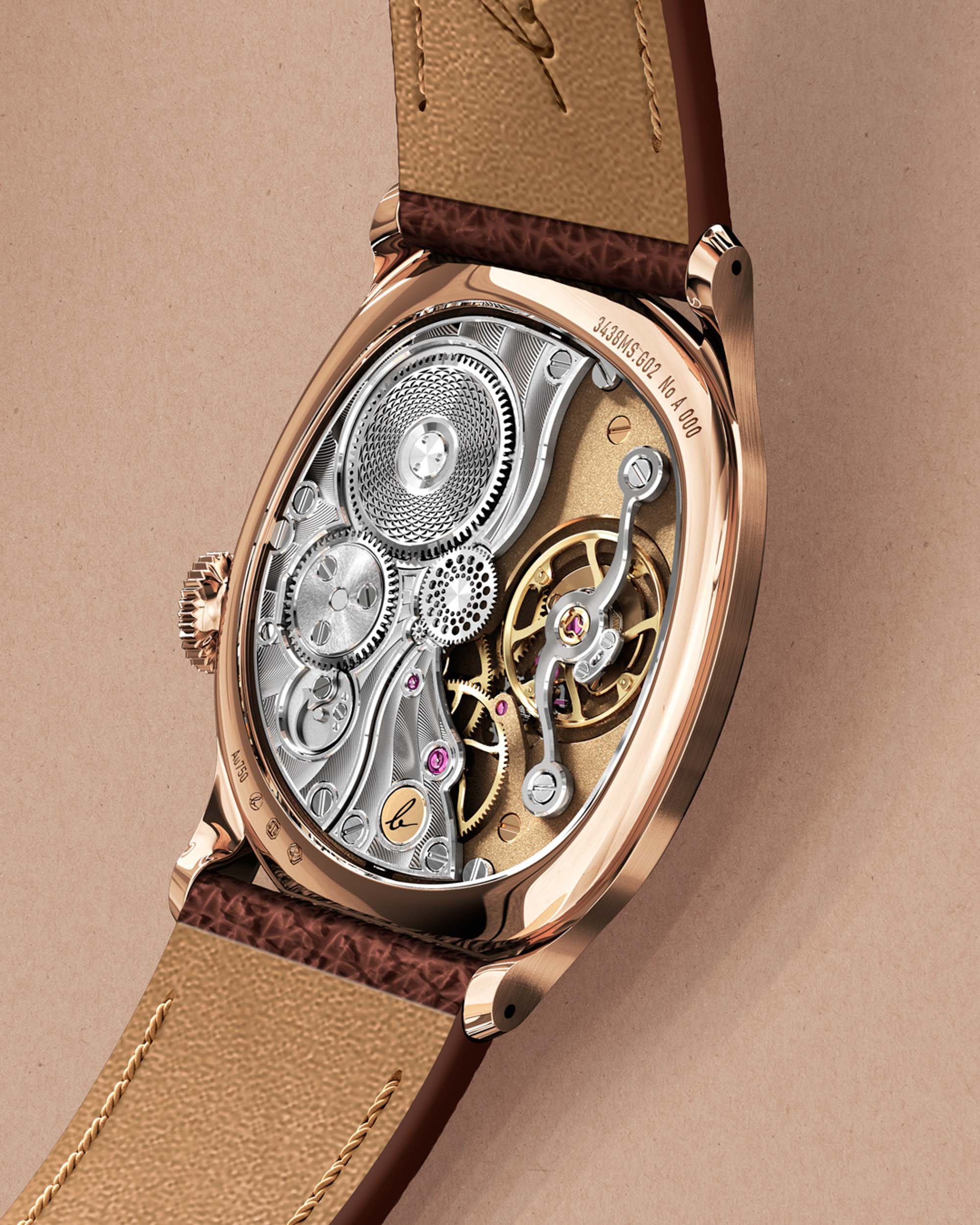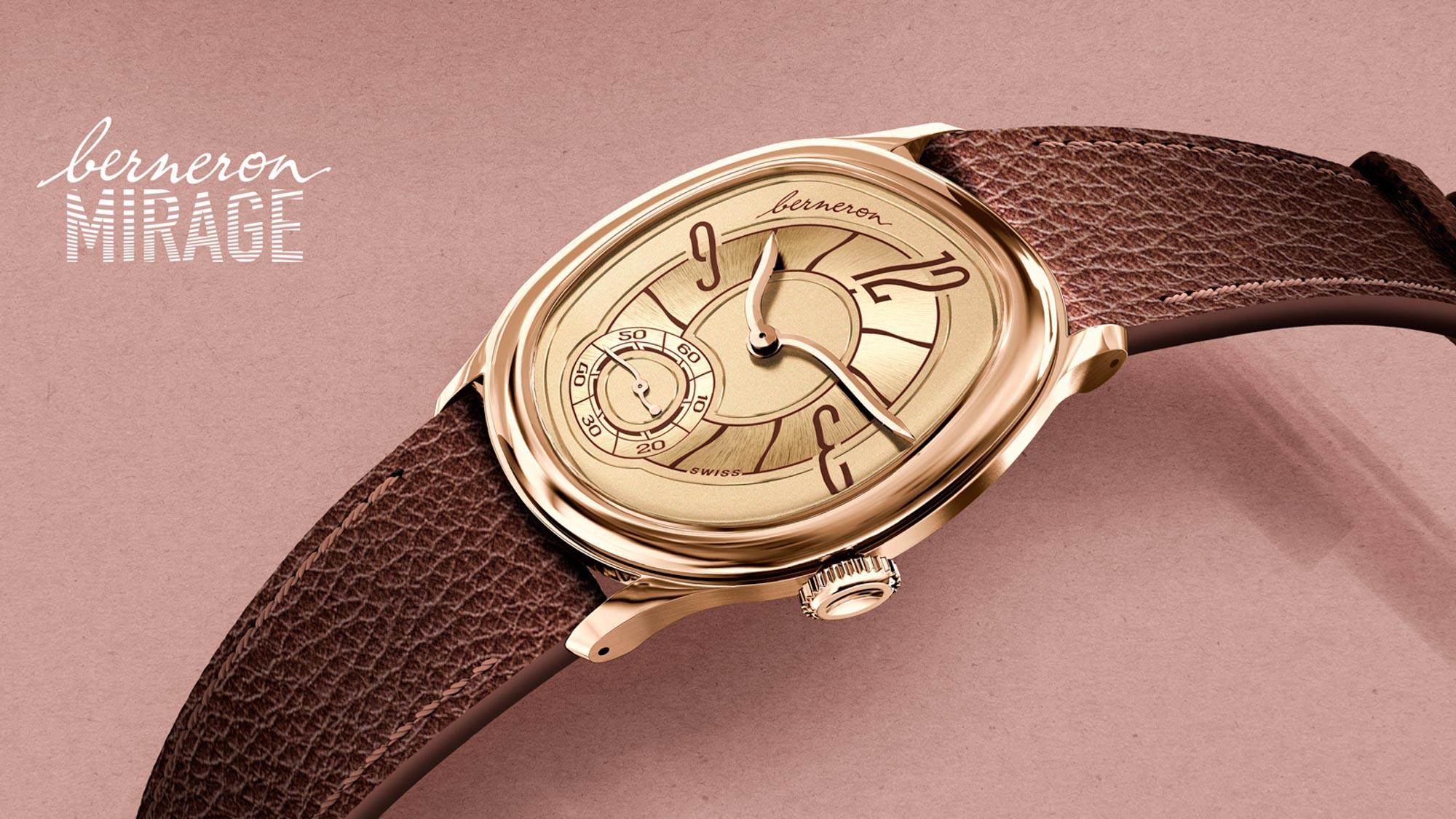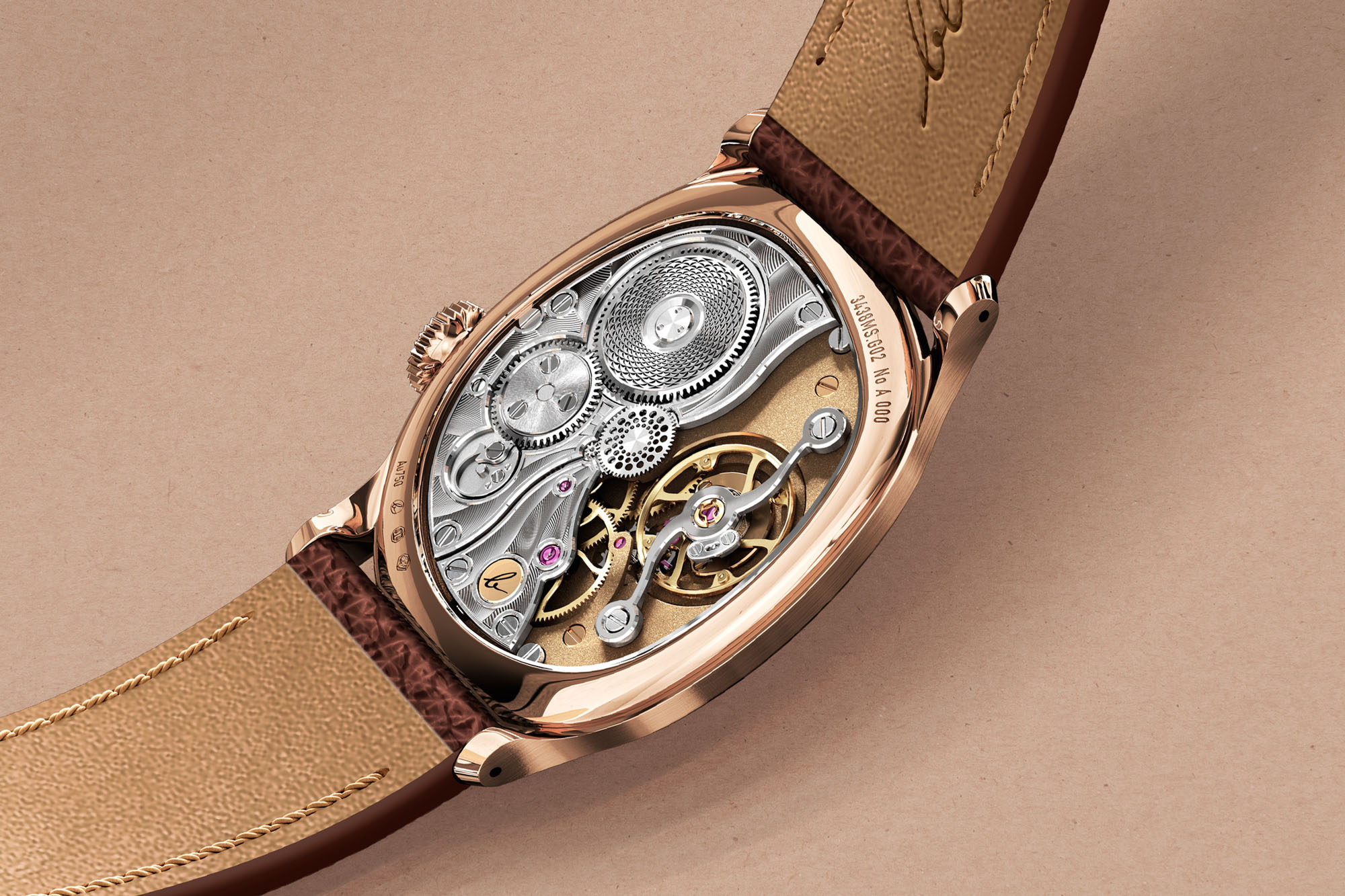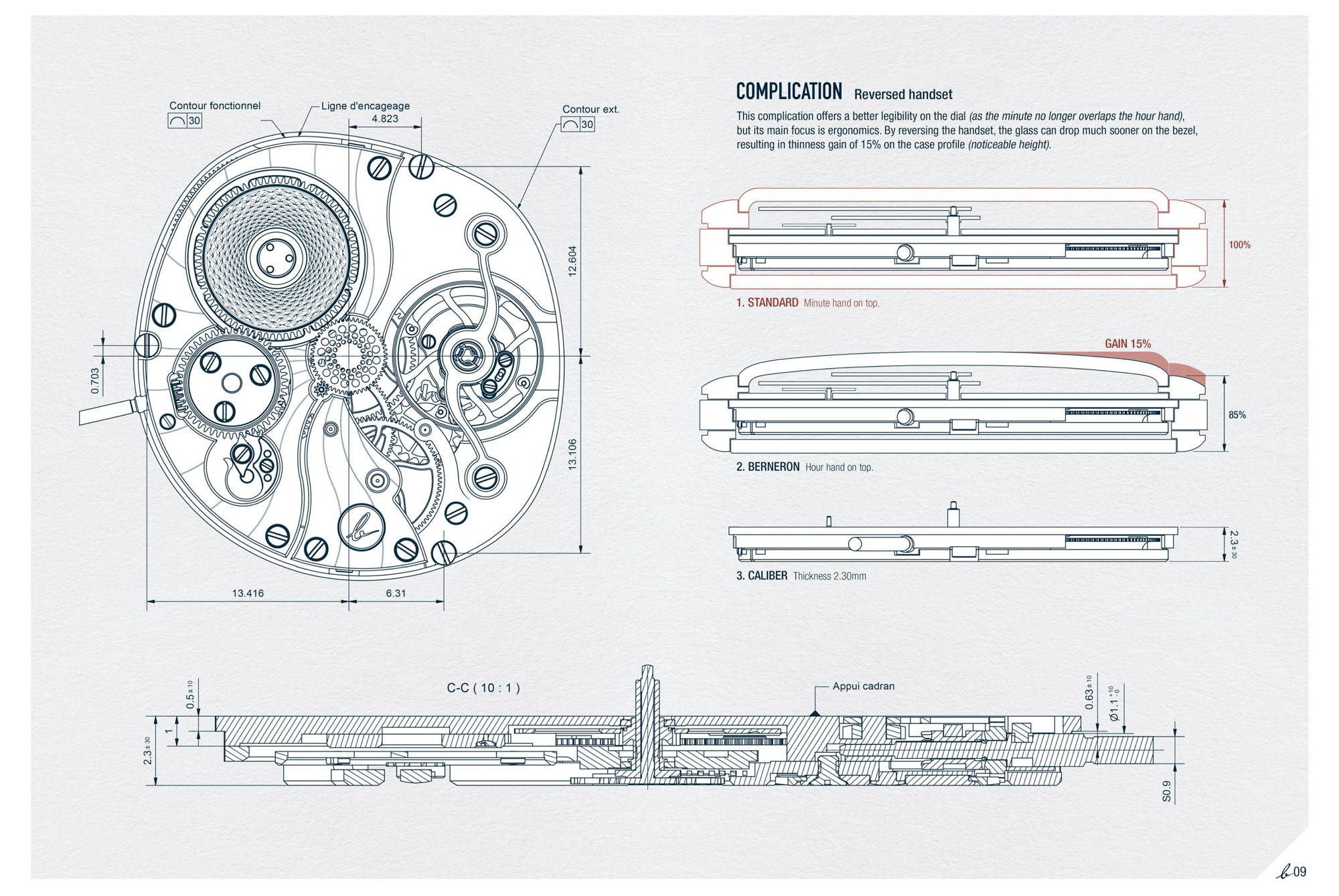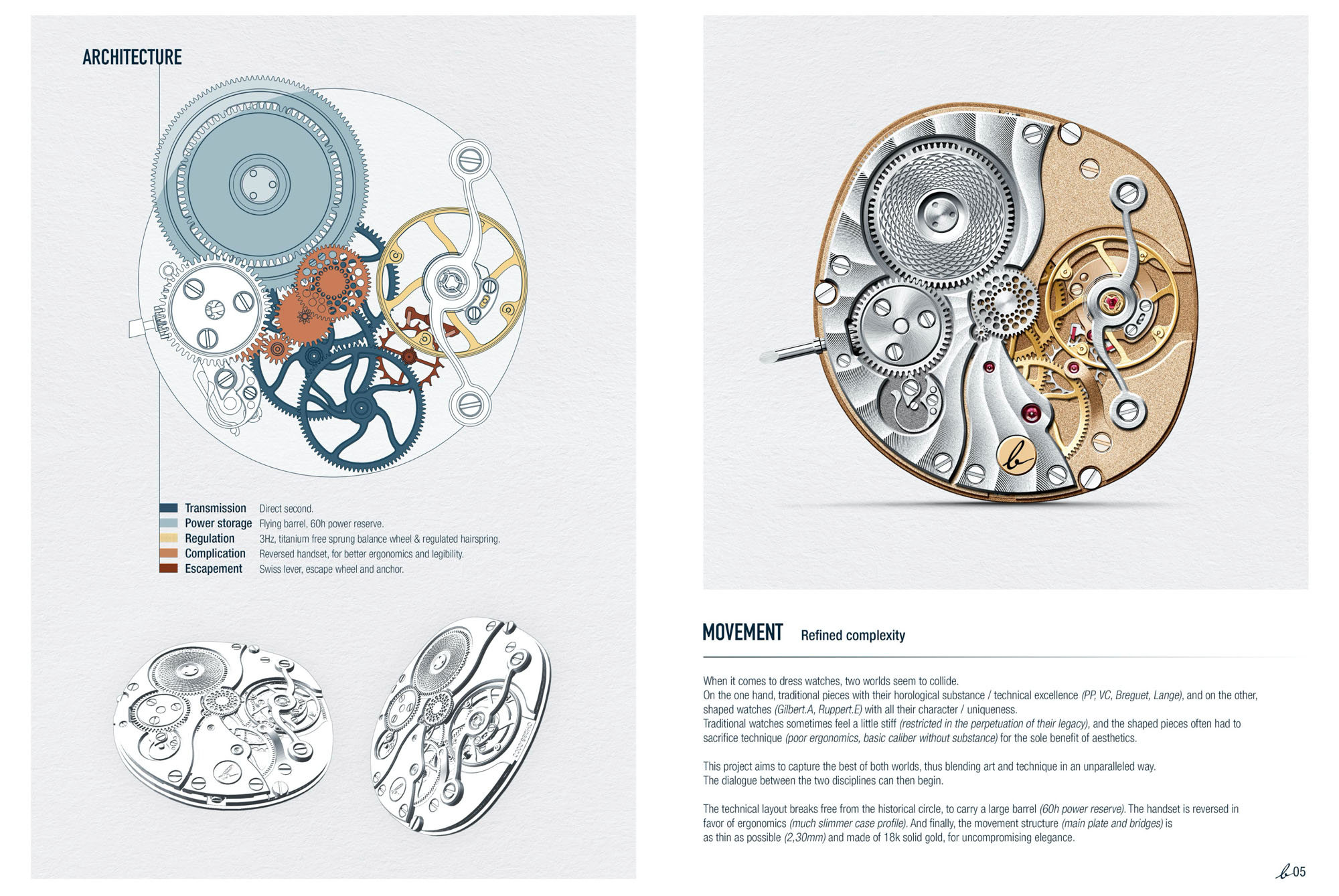
This is a big one. It is because it is an exceedingly rare occurrence for several exciting reasons even in the hectic world of watches. The watch brand Berneron was recently established by Sylvain Berneron, the sort of industry professional normally kept in a dungeon by their employer, with the doors barred by impenetrable stacks of non-disclosure agreements. Having worked for BMW, Porsche, Ducati, and IWC, and actively functioning as the Chief Product Officer at Breitling watches, the few that are the likes of him spend a lifetime driving the wheels of the watch industry — and nothing else. Not in public, anyway. The Berneron Mirage, this all-gold, uniquely designed dress watch is the sign that Berneron has managed the scarcely manageable: Start a watch brand under his own name and start it with a bang, while sticking with his “regular” responsibilities at Breitling.

About The Berneron Watch Brand
The Berneron Mirage watch is a fantastically enticing proposition thought through and indeed executed to a depth that we encounter no more than a handful of times in a decade. It’s one of those few times when someone goes all the way — not simply to carve out a new niche (that also helps), but because it’s precisely why they set their own brand up in the first place. Before we get to know the secrets its 2.30mm-thick movement and 7.00mm-thick case have in store for us, I do insist on presenting the circumstances under which Berneron, the watch brand, was born and is operating.
In his introduction, Berneron, the 34-year-old watch designer, gives credit to Georges Kern, CEO of Breitling, for “granting me the privilege of being contractually allowed to make watches under my own name, which I had dreamed of for many years.” He continued, “This needs to be mentioned because such a scenario is extremely rare in the watch industry. After accomplishing great things at IWC and Breitling, Georges [Kern] is now indirectly also supporting independent watchmaking.” Berneron also thanks his wife, Marie-Alix Berneron, as he explains: “I keep serving Breitling to the best of my abilities while dedicating my evenings, Fridays, Saturdays, and Sundays to Berneron. These are two very distinct philosophies, one being a pragmatic and performance-oriented approach; when the other is a zero-compromise, borderline insane artistic expression.”
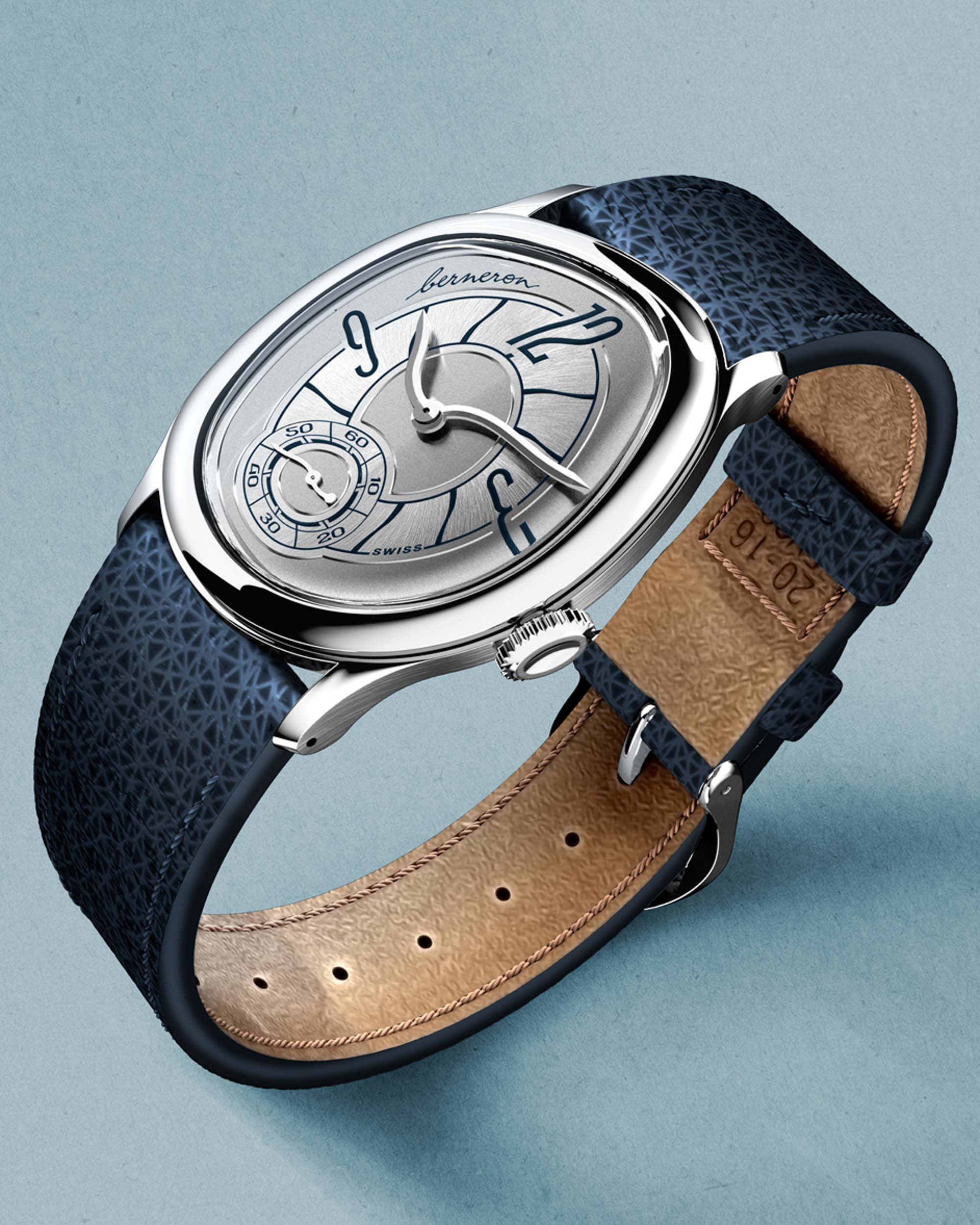
“Zero-compromise” here means a watch that had to be conceived, designed, prototyped, and approved by Berneron himself in its entirety. Although he relied on Swiss suppliers like anyone and everyone else, the concept and indeed the finished watch falls as far from an OEM (i.e. “supplied”) vibe as it is humanly possible. The surreal melted design, the reversed hand installation for a slimmer profile, the bespoke typography, the ever-so-slightly canted installation of the crown and movement, the shaped movement tailored to fit this case and nothing else, and a “tout d’or” [all-gold, French] execution where every single exterior component that you can touch and/or see is gold, including the spring bar: these all indicate that Berneron endeared (or pushed) specialist watch case, dial, hesalite glass (front) and sapphire crystal (rear), and movement suppliers as far as even the biggest and fanciest names in the industry frequently fail to manage.
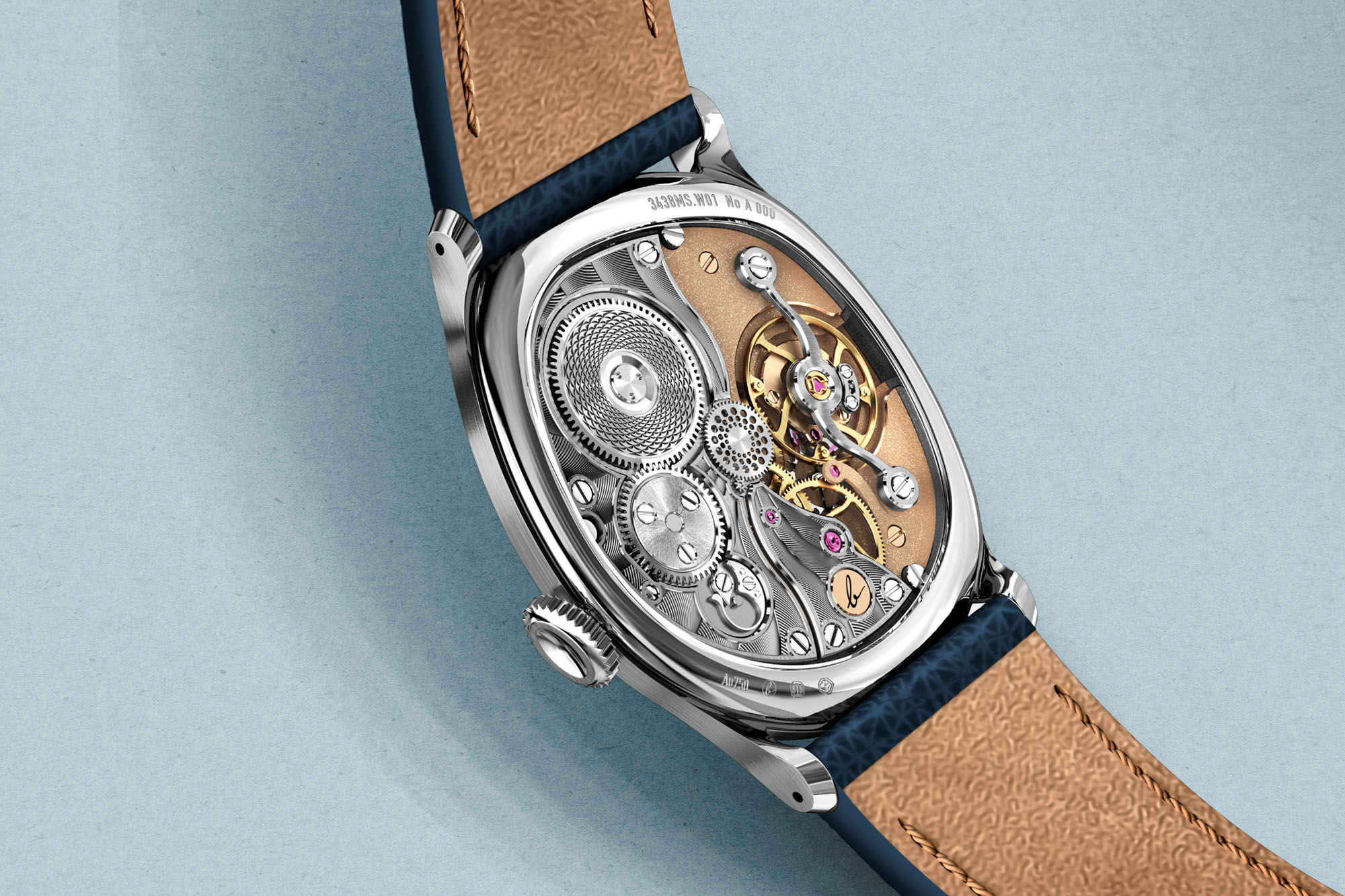
All this is to say that Berneron has taken on the frankly gargantuan challenge of not only starting his own brand, but designing, prototyping, and putting into production a watch that is fully unique from its movement architecture all the way to the smallest and most invisible detail across all those (and more) facets we just listed. But there is reason, at least some, behind the madness. You see, anyone who has followed the rise (and fall) of watch brands since the luxury watch industry set off on its renaissance period in the late 1980s will know that launching an entirely new watch line can prove to be too grand an undertaking even for some more historic names. One need not look too far back to find watch collections launched anew with a bang that demonstrated how difficult nailing a watch from an artistic or technical aspect is on a first try.

But this isn’t Berneron’s first try. He is an industry professional, and as such, one who has quietly written his bucket list of watch design and feature elements he had always wanted to see in a timepiece — but could never bring to life. At the risk of stating the obvious, a fledgling little brand like Berneron and a top-10 listed industry giant like Breitling have very little, if anything, in common, other than that they both sell wrist-worn objects that indicate the time. The differences between the scale of manufacturing — and the consequent leverage on suppliers — are as stark as night and day, as the Swiss watch industry had decades to gear up to support the hundreds of thousands of orders each of its almighty brands places for components like hands, dials, gears, pinions, or seemingly mundane stuff such as spring bars.
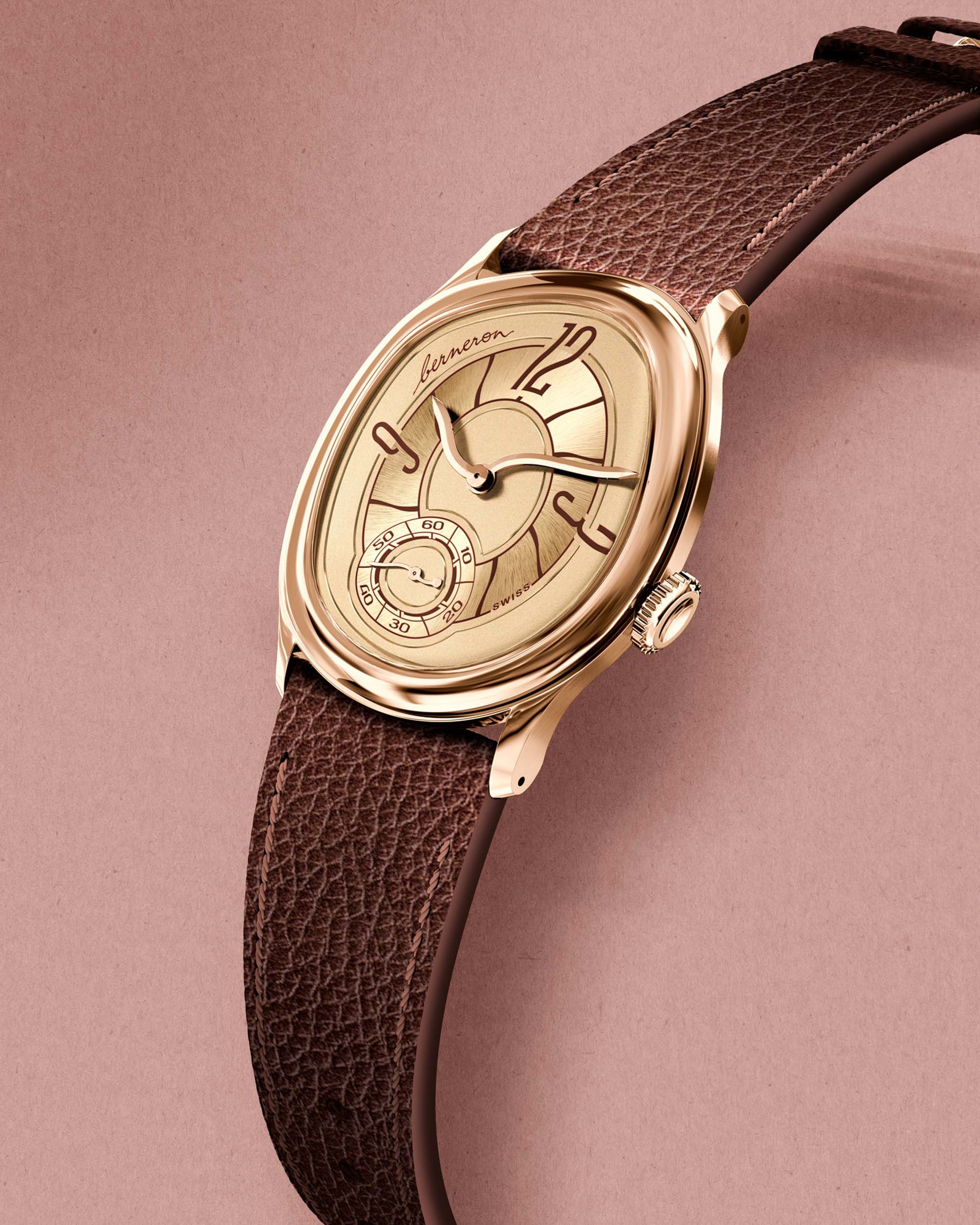
About The Berneron Mirage Watch
This is a shame because it is incredible what these suppliers can do once they choose to reward one out of the dozens of small-brand applications with their attention and manufacturing capacities. Having visited countless manufactures and suppliers in the industry, I can say that setting up the tooling to make literally any part that you can lay your eyes on is such a pain for a watch like the Berneron Mirage that suppliers frequently choose to not even reply to an inquiry — which is a far cry from bringing it into production.
To make a few dozen hands, dials, crowns, cases, gaskets, or spring bars, opens up a wealth of possibilities for hand, dial, and case manufacturers to spend hundreds of fruitless hours while they could be making the 10,000th of the same case for an established big-brand customer. This is to say that a watch as bespoke as the Berneron Mirage exists — where almost every separate component is its own gigantic struggle to put into manufacturing — tells us that the project was deemed worthy of these struggles at the earliest stages if by no one else then at least by the suppliers Berneron approached.
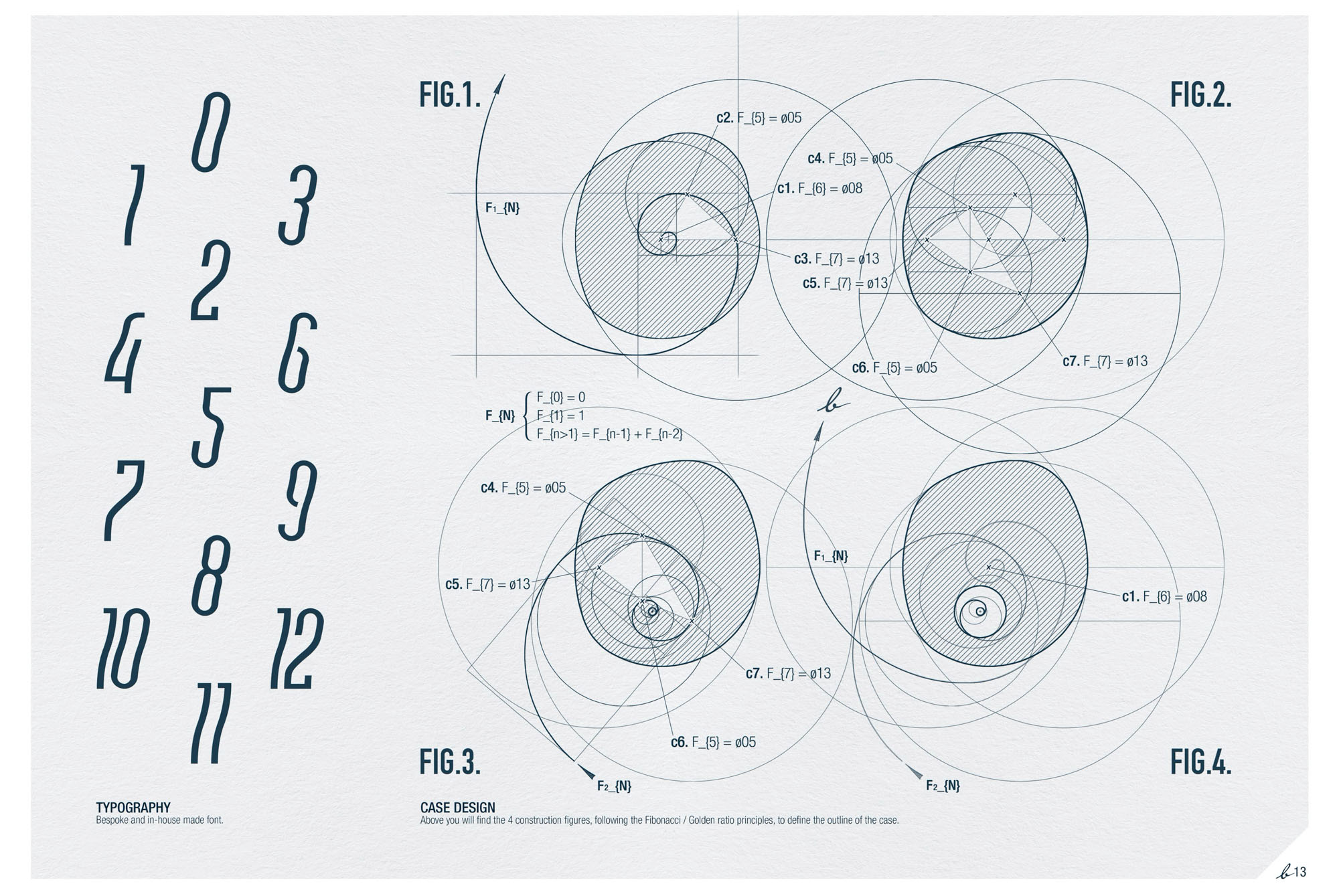
The Mirage poses as a surrealistic take on a dress watch, a bit as though Salvador Dalí had taken on Art Deco watch design. Again, there is reason behind the madness: Berneron offers a new take on the Fibonacci sequence, also known as the golden ratio. As a point of reference and inspiration, Berneron refers to Adolf Zeising (1854), who said, “The golden ratio is a universal law, in which is contained the fundamental principle of all effort to form beauty and completeness, in the realm of nature as in the field of art, and which pervades from the beginning, as a supreme spiritual ideal, in all forms and proportions.” In practice, the case design relies on sectors (a portion of a circle that is composed of an arc and its two radii) of various proportionate sizes to define the seemingly arbitrary, bulbous shape of the case.

The Berneron Mirage watch measures 33.50mm wide and 42mm lug-to-lug, which clearly are modest dimensions that require a slim case for ideal proportions and an overall sense of refinement. The thickness of the case between the caseback and the top of the domed crystal is 7.00mm, while the vertical distance between the caseback and the top of the bezel is 4.90mm. Berneron opted for a reversed mounting of the hands where the hour hand sits not below but above the minute hand which in turn allowed for a front glass that is a lot more domed than it is boxed. For the front, Berneron uses Hesalite for no other reason than its optical qualities, and thanks to the flipped hands it can be a perceivable 15% thinner.
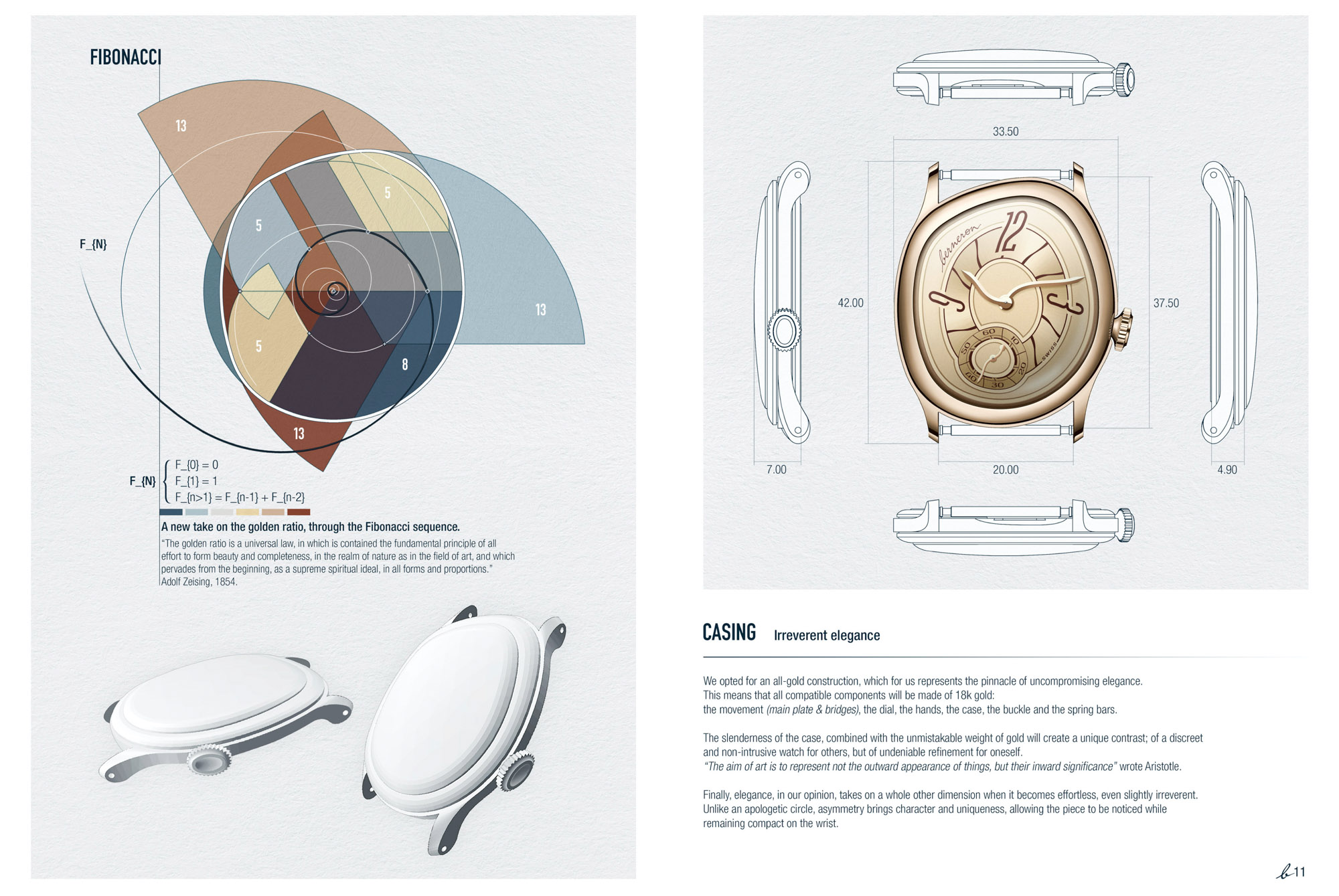
The overall impression of the watch, then, is all the more pebble-like and hence natural — a highly elegant and extremely rarely seen execution that is always welcome on a dress watch. A dress watch has to be thin, but it also has to entertain without the vast bezel, case profile, and lug surfaces to operate with as hefty sports watches have — it’s the pursuit of sophistication that collectors of fine dress watches (and anyone with a taste for such things) will appreciate. We have handled early prototypes of the Mirage which allowed us to assess its proportions and design, and we look forward to going hands-on with a production run piece early next year.

True All-Gold Execution — A Tiny Watch With Considerable Heft
We mentioned “tout d’or,” an arguably long-forgotten and basically never applied approach to watch manufacturing where every possible component is crafted from gold, as opposed to being substituted with cheaper parts. Berneron provides a detailed breakdown of the list of components that will be made from gold, and this includes not just the exterior, but even the movement. As for the exterior, the bezel, middle case, caseback, crown, spring bars, buckle, and buckle spring bar are all crafted from Au750 (18k gold in 4N color which is a warmer hue between yellow and rose) or Pd210 (18k white gold). The dial is also in solid 18k 4N or white gold, satin-brushed and polished, as are the hands, of course. In the movement, the mainplate, anchor bridge, minute bridge, escape bridge, barrel bridge, second bridge, and “B medallion” will be crafted from Au750 (18k 4N gold) or Pd210 (18k white gold). Parts that are subjected to higher stresses, like the winding gears and balance bridge are in 316L stainless steel, while the timing gears are 1N gold-plated brass.

List of various components and their material, as well as the short list of components that can be found in other movements.
Berneron is also completely transparent about the nature of the movement as well as the list of components that are shared with other calibers. The latter are the escape wheel and anchor, hairspring, and sliding pinion along with the jewels and screws — a totally reasonable list that is likely true even for the most creatively wild movements from MB&F, Urwerk, and the like. The balance wheel is in light-weight titanium and is free-sprung with a regulated hairspring, operating at a frequency of 3Hz. The flying barrel provides an extended power reserve of 60 hours. In the middle of the Berneron watch movement is a reversed application of wheels to allow for the aforementioned flipped installation of the hour and minute hands.
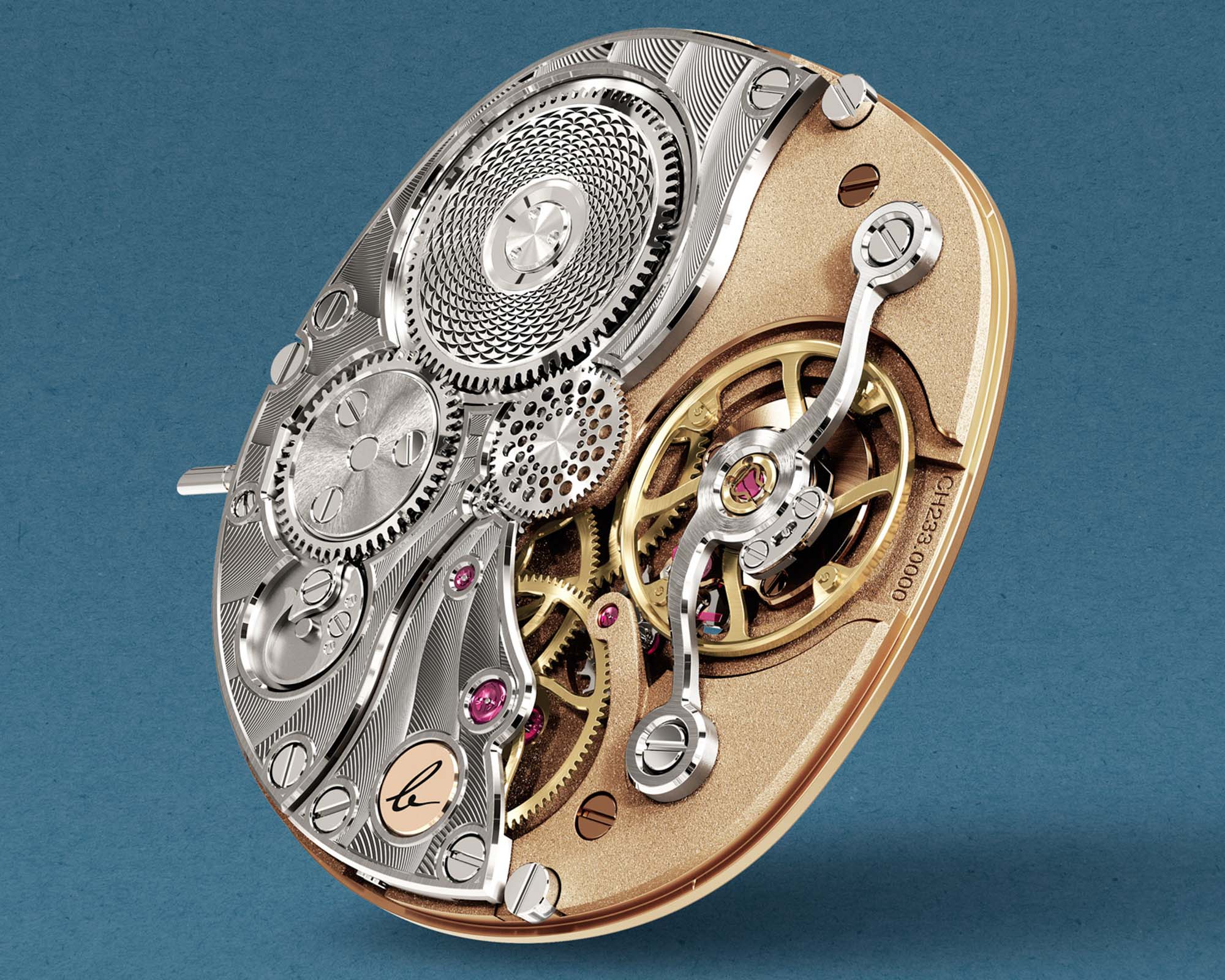
The movement decorations are yet to be finalized, but it is easy to see how endearing a movement crafted from a combination of solid 18k white gold and 18k 4N gold bridges can be. To double down on the versatile presentation, some parts will feature snailed striping while others appear frosted — all on a movement that measures just 2.30mm thick. Berneron’s intention is to trick the senses not only with the design but also with the feel. The Berneron Mirage watch has the aforementioned restrained dimensions but combines those with an all-gold execution that adds considerable weight. The final effect will be one like few others: That of a rather petite watch that carries unexpected heft thanks to an all-gold case, and gold dial and movement — most 18k “solid gold” watches only have their cases made of gold while the rest (movement plates and bridges, dial, etc.) are crafted from much lighter and much cheaper brass.

10 Years In Production
The Berneron Mirage Series A will be produced for 10 years, at the rate of 24 pieces per year. The B-series will arrive in 2033 and will feature minor aesthetic and technical changes, based on the experience gained with the A-series. Berneron explains, “This rhythm will allow us to have the necessary quantities to build a sustainable process and to be able to offer a quality service over time, both for manufacturing and for after-sales. Our aim is to build a stable brand image, with products that can stand the test of time, both for us and for collectors.”
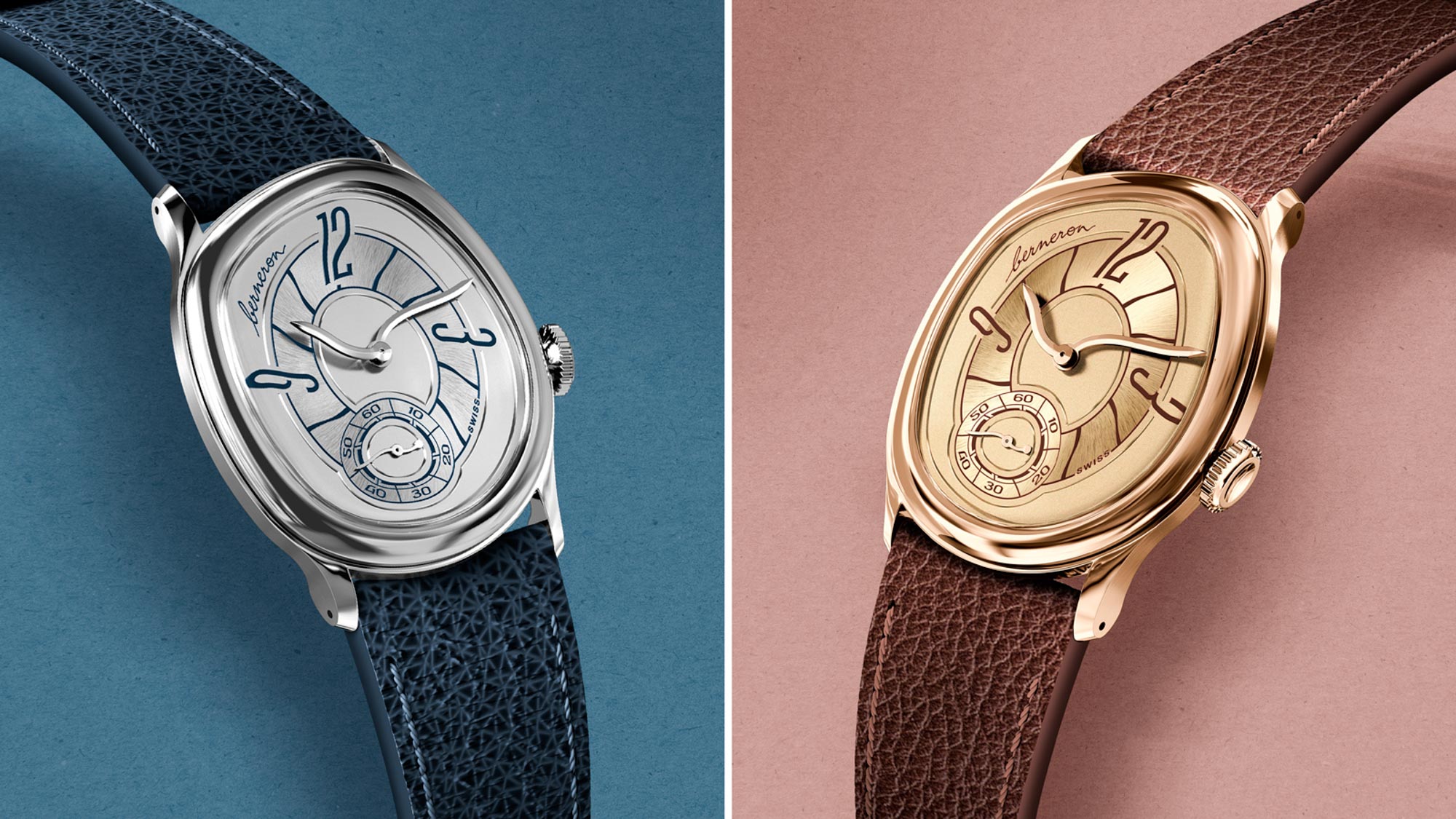
The Berneron Mirage watch comes in two variations, the Mirage Prussian Blue and the Mirage Sienna. The former is named after and inspired by the blue pigment Swiss colormaker Diesbach created in Berlin in about 1706, and that played a major role in the development of fine art as it was the first synthetic blue discovered since the ancient Egyptians. The latter is styled and named after the Italian city of Sienna. Sienna is a yellowish brown (reddish brown when heated) pigment that was one of the first pigments ever used for painting all the way back in prehistoric cave art.
The first three years of allocations have already all been spoken for, so the Berneron Mirage can currently be ordered for 2026. The Berneron Mirage watch is priced at 55,000 Swiss francs excluding VAT — with 24 pieces being made each year. You can learn more at the brand’s website.

